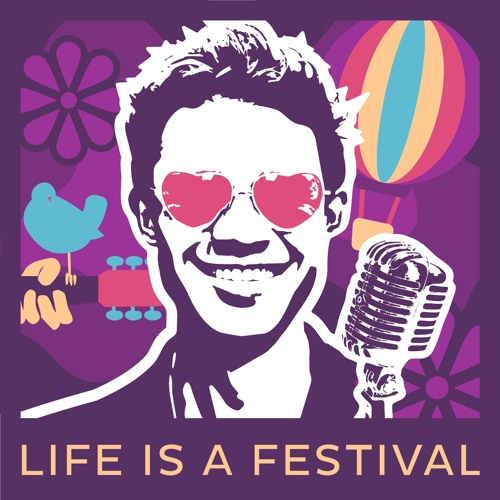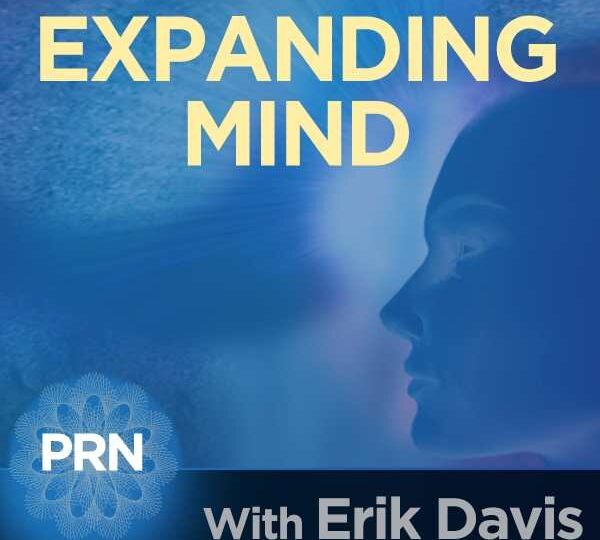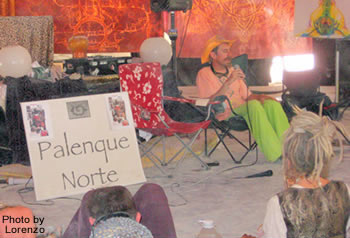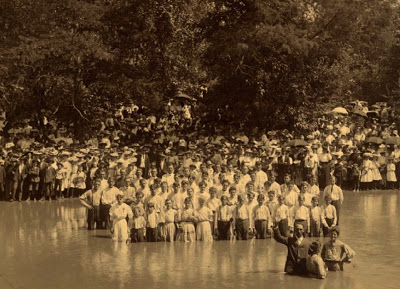
A New York opening for this fantastic visionary artist
On Thursday, February 15, New York’s MicroCOSM gallery will host an opening of new work by the fantastic Brooklyn painter Oliver Vernon. MicroCOSM is the gallery space at COSM, the Chapel of Sacred Mirrors that serves as a combined temple/museum/community space for Alex Grey’s celebrated cartographies of the visionary body. The newly renovated gallery is a perfect place to peer into the magnetic, multifaceted worlds crafted by Vernon, who lines up with Damon Soule and Mars-1 as one of the strongest new-school visionary artists. (All three appear in the 2005 book Convergence, an extremely worthwhile collection that I was happy to find in the above-ground shelves of the SFMOMA museum shop.)
Vernon lives in a renovated loft in Bed-Stuy, where he paints and draws obsessively. His work is a constantly flowing but constructive meditation on depth, mandalic design, and the mystic spunk that lends organic shapes their peculiar and sometimes alien sense of life. The fluttering ribbons and liquid rhizomes that often float through his evocative spaces are at once playful, probing, and profligate. He paints on different types of surfaces, working both with and against the grain of wood and canvas, sometimes combining (and recombining) panels to form larger works; sometimes he adds collage elements as well. Everything serves to layer and invoke multiple dimensions: the dense graphic surfaces of graffiti art, seeking depth; loopy 3D splatters and orbs; abstract voids and plunging tunnels that suck you in like a SciFi tractor beam.
These fluctuating dimensions could be said to signal the various art worlds that Vernon straddles. With his lyrical and even devotional invocation of organic astral otherworlds, Vernon has woven himself into the admittedly marginal canon of contemporary visionary or psychedelic art, but his clear nods to street art and what I call the “cartoon continuum” also resonate with the lowbrow esthetic associated with Juxtapoz. At the same time, Vernon is too canny — dare I say sophisticated? — to sink into the clichéd cheese that characterizes so much psychedelic art. That, combined with his ambition, may allow Vernon to crack the New York gallery world that is trying to negotiate its own relationship with these subcultural pockets of vital but often derivative art-making. Vernon’s strongest art integrates and fuses as much as it straddles and samples; it is smart as well as strange. In his bubbling orbs I simultaneously see Rick Griffin’s flying eyeballs, Odilon Redon’s famous ocular balloon, and the transparent eyeball that Ralph Waldo Emerson described when writing about his own famous visionary experience in the woods:
Standing on the bare ground, my head bathed by the blithe air, and uplifted into infinite space, all mean egotism vanishes. I become a transparent eye-ball; I am nothing; I see all; the currents of the Universal Being circulate through me; I am part or particle of God. The name of the nearest friend sounds then foreign and accidental: to be brothers, to be acquaintances, master or servant, is then a trifle and a disturbance. I am the lover of uncontained and immortal beauty.




